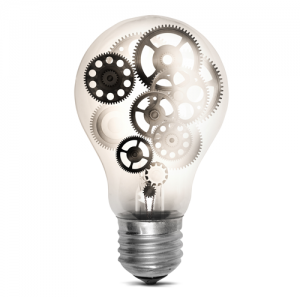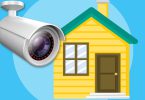 Whenever I hear the words “home automation”, the first thing that comes to my mind is connected lighting. Connected lighting gives you power and control over your lights—lamps, fixtures, and beyond. Connected lighting can help reduce energy costs, give users remote control over lighting, and open up an array of personal lighting options. There are three ways to set up a connected lighting system. In general, this includes smart plugs, smart switches, and smart bulbs. These three options are different, varying in price, features, pros and cons, and delivery. If you are thinking about automating your lights but not sure where to start let’s help by breaking down these three options.
Whenever I hear the words “home automation”, the first thing that comes to my mind is connected lighting. Connected lighting gives you power and control over your lights—lamps, fixtures, and beyond. Connected lighting can help reduce energy costs, give users remote control over lighting, and open up an array of personal lighting options. There are three ways to set up a connected lighting system. In general, this includes smart plugs, smart switches, and smart bulbs. These three options are different, varying in price, features, pros and cons, and delivery. If you are thinking about automating your lights but not sure where to start let’s help by breaking down these three options.
Smart Plugs
Smart Plugs are not just for lighting. Smart Plugs also work with other appliances in your home. Smart Plugs are plugs with brains. They plug into your standard wall outlet plug and add a layer of intelligence. Smart Plugs use some sort of wireless communication like WiFi, Z-Wave, or Bluetooth to communicate back to a hub. This intelligence allows you to remotely cut power on or off to that plug which means that anything “plug in” can now be controlled remotely using your smartphone or tablet. Most Smart Plugs come with a smartphone application that can be used to customize your plug, say, scheduling when it turns on and off, checking how much energy you have saved, or switching it on or off. Smart Plugs were also designed to kill off vampire energy loss, or the energy consumed when an appliance is plugged in even if not in use.
Smart Bulbs
Smart Bulbs are smarter light bulbs. Just like typical light bulbs, Smart Bulbs are screwed into a bulb socket. The bulb can then be connected wirelessly to your home network or hub. Once connected, you now have full control over your Smart Bulb. They come with a lot of features, depending on which Smart Bulb you’ve purchased. You can control your bulbs remotely from your smartphone or tablet. Some can turn on or off on a schedule and some use proximity sensors or geofencing features to detect whenever you are near so that it turns the light on for you. There are others that can be set to gradually dim over a specific period of time, mostly used during bed time. More expensive Smart Bulbs can even change colors, either depending on the time, the weather, the temperature, or your personal preference.
Smart Switches
Smart Switches have been around for decades in one way or another. In the past we had timer switches that turned on or off based upon the timer. New switches do not require a timer once again reducing energy costs. Most Smart Switches have touch interface so that you can still control the light at the switch or you can control the light remotely using your smartphone or tablet, wherever you are in the world. Smart Switches comes with an app that offers more features like grouping multiple bulbs so that they will all turn on in a specific time or when you get home (geofencing feature). As Smart Switches are connected wirelessly, you can set them to turn on as the sun sets and off as it rises.
Pricing
All of these options will cut your energy costs and will be an asset in the long run. But still, for most of us, the initial cost is a big determining factor. Here are the range of prices of the three.
- Smart Plugs: $25 to $150 (Average Smart Plugs costs around $50)
- Smart Bulbs: $15 to $150 (Average Smart Bulbs costs around $40 to $80)
- Smart Switches: $40 to $70
Smart Bulbs are the cheapest option, kind of. Roughly estimating it, a house with 3 bedrooms, 2 bathrooms, a kitchen, a dining area, a porch, a lighted doorway, garage and basement, might have 18 light bulbs. That is $270 with the cheapest product in the market. To control all these light bulbs, you might only need 4 to 5 Smart Switches which would cost about $200. However, this doesn’t factor in DIY vs professional installation.
Installation
Smart Plugs are easy to install. Just plug them in a wall socket and follow the instructions given in the manual. You will have to connect it to your hub, download your Smart Plug’s app interface, set and customize it but it shouldn’t take longer than 10 minutes. During the process, you have the choice to customize the Smart Plug according to your lifestyle or leave the default settings. Either way, the installation process is pretty simple and does not require a professional. Smart Bulbs are almost as easy to install. All you have to do is get a nice, sturdy chair or a ladder, climb up, screw the Smart Bulbs in, and connect it wirelessly to your hub using its app interface. Smart Switches are hard-wired and harder to install. Smart Switches usually require professional installation.
Pros and Cons
Smart Plugs Pros:
- It kills off vampire energy costs.
- You’ll be able to check your energy usage.
- It works with other Home Automation products.
Cons:
- It only works with table lamps, unless you want a wire dangling from your ceiling to your wall outlet.
- It uses up a socket in the wall outlet
- Customization is limited. For example, you can’t change the hue of the bulb or use dimming.
Smart Bulbs Pros:
- Easy to install.
- Connects easily with other devices.
- It can have cool features such as changing light colors.
Cons:
- You’ll need to replace it once the light bulb burns out.
- It can be expensive to change all your bulbs into Smart Bulbs.
- It can be hard to group the bulbs together for easier access.
Smart Switch Pros:
- It gives your lighting full connectivity.
- Some use geofencing features to detect whenever you are nearby.
- Lower upfront cost.
- Grouping together of light bulbs is easier.
- Lasts for a long time and doesn’t require frequent replacement.
Cons:
- It is hard to reset settings.
- It requires a professional installation.
Light automation can be fun. Using light automation not only saves you money and energy, it can also add to your home’s security by making it appear that you are home even when you are not.







